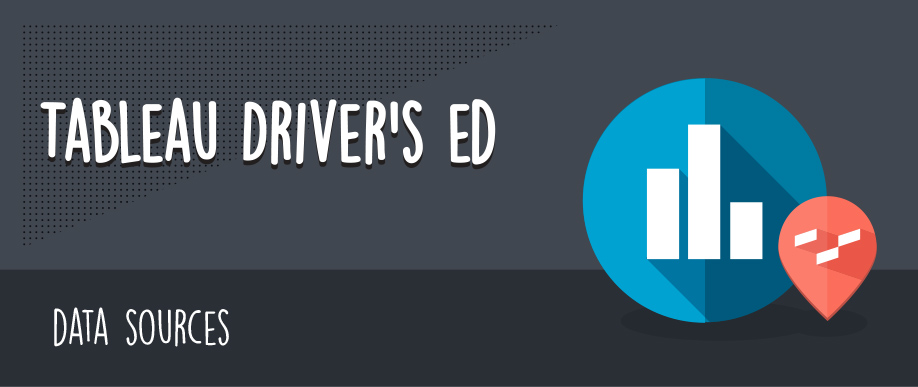Tableau Driver's Ed is a blog series in which we explain InterWorks' unique take on Tableau Drive, a new methodology for enabling self-serve BI in the enterprise.

“Without data, you are just another person with an opinion.”
– W. Edwards Deming, Statistician, Author, Consultant
Tableau without data is just an interface, a car without gas. The more usable data sources that you can add for your report creators the better. In this article, we’ll present some principles to help guide you on adding new data sources for your Tableau Drive team to analyze, experiment and test.
Remember, in the business-IT partnership, managing the data is the job of IT. It is the job of the business side to source new data sources and identify new opportunities for IT to add.
Simplicity
When it comes to using data in Tableau, err on the side of simplicity. It is far better to use a lot of simple models than one super data source that is highly complex and complicated. There are a few good reasons for this. First, the complicated data sources are harder for end users to understand, requiring more documentation and training.
Additionally, with many moving parts, there are many opportunities for a complicated data source to break. Changes and edits are harder to track down, and it’s harder to understand the impacts that each change will make to the people using your data.
Lastly, a single data source that serves many purposes tends to do its many jobs poorly, when a simpler source would better server the need with better performance to boot.
Remember, keep it simple.
Security
A good guiding principle for security is to give as much freedom as you can to empower your users yet use as much security as is needed to protect your assets. As in many things in life, it’s about finding the right balance of these factors. It is not wise (or legal) in every situation for users to have access to all of the data. Self-service analytics simply requires that those who need the data should have access to it. This democratization of data focuses takes data out of the hands of IT and puts it into the hands of the business-side decision makers.
Data sources should be configured with filters for group, role and user-specific as required. There are no hard and fast rules for which groups or users should have access to parts of your data, but ask the question: Does this person or role need to see this data? What are the risks to this data, and how can we mitigate them? Can users build effective reports and dashboard without access?
Speed
Nothing kills enthusiasm for a new tool than having that tool run at a snail’s pace. Speed and efficiency are the cornerstones to any successful implementation of the Drive methodology. Speed has multiple factors, including your data infrastructure, server configuration and dashboard design. There are a number of tips and tricks that we’ve put together in the Tableau Performance Checklist that can help along with a properly configured Tableau Server. If your queries are slowing performance, consider creating well-indexed summary tables to reduce the compilation time needed for your queries to finish.
Flexibility
The best way to configure and plan your data is to watch your business users. Watch how they are trying to leverage your data sources, then configure them in the simplest and most efficient way to facilitate your end users. Keep in mind that flexibility is key. As your team becomes more sophisticated in Tableau, your data sources will evolve and change with them.
Quality
Your dashboards are only as good as your data. Unclean data sources make your dashboards meaningless, regardless of how elegant your data marks might be. Create dashboards that you can vet with other sources to ensure that your data is accurate if there are any doubts within your test environment.
Also, cleaning your data source might include handling null values, unmatched rows, duplicates or non-conforming dimensions.
Documentation
We’ve hammered this point over and over again in the Tableau Driver’s Ed series. As you simplify your data sources and add new ones in the future, create a data dictionary to empower your report creators to get deep into the data as soon as possible. Let them know what each field means, its data type, where it comes from and any relationships it has with other data fields. You can even create workbook templates as a part of the documentation with inbuilt tooltips and information boxes as a learning tool.
Next Steps
In addition to your own native data sources, there are plenty of public or for purchase data sources that can really add a new level to your dashboards. Data sources, like census information, are quite powerful. If you have any questions on how you can better leverage your data or cleaning up data in a complicated or compromised system, InterWorks can definitely assist.
Contact us today for more information on how we can help you.

